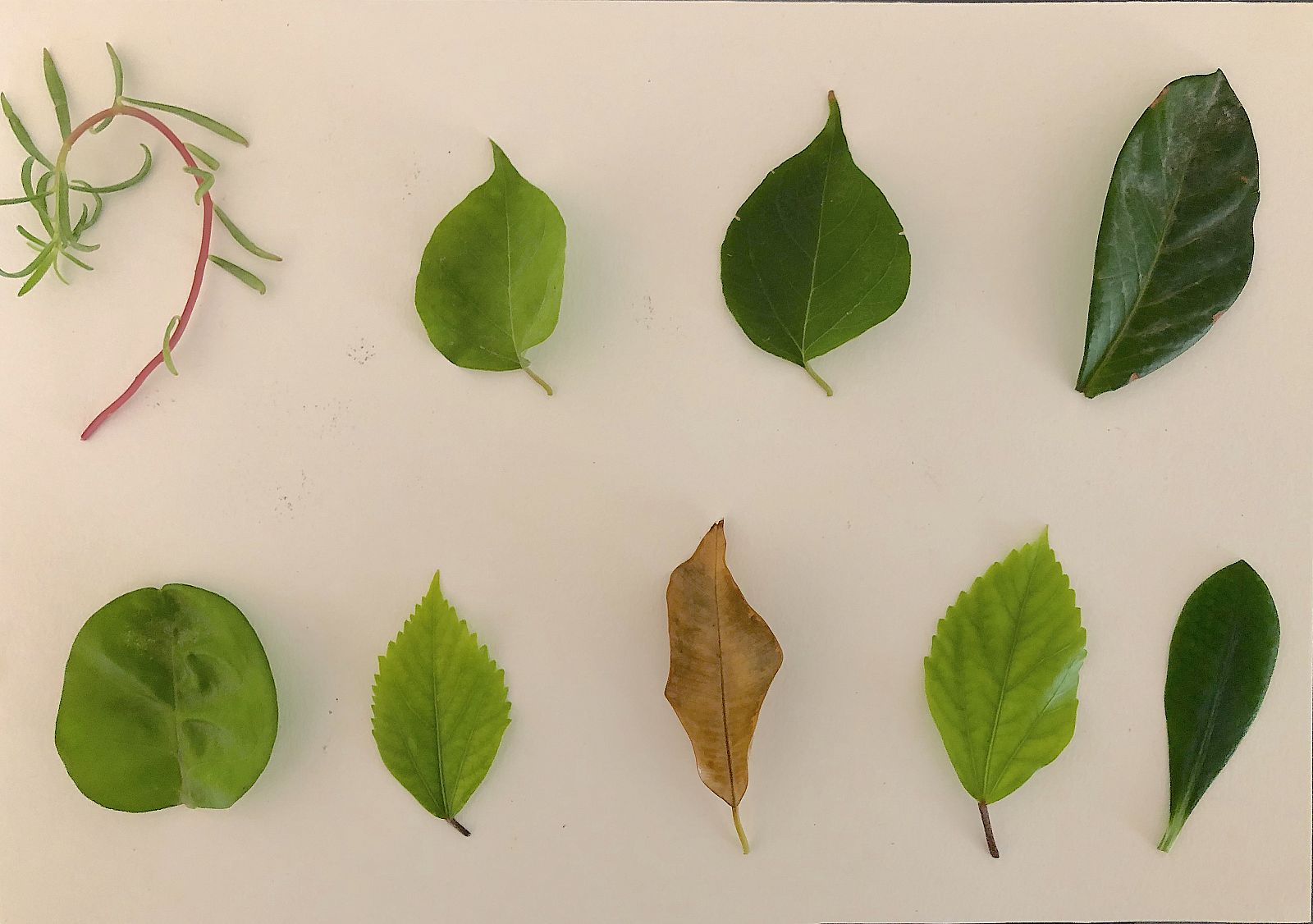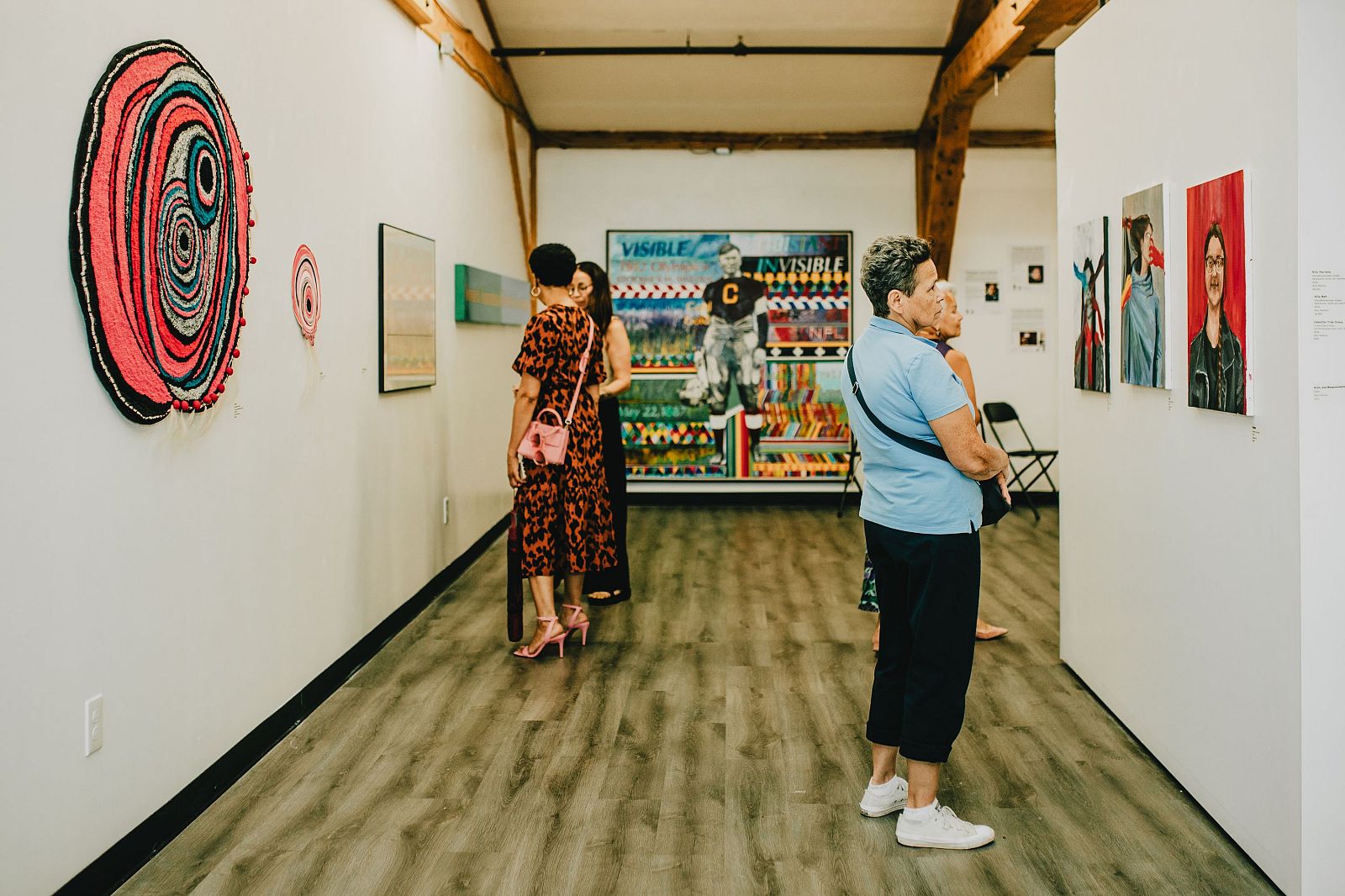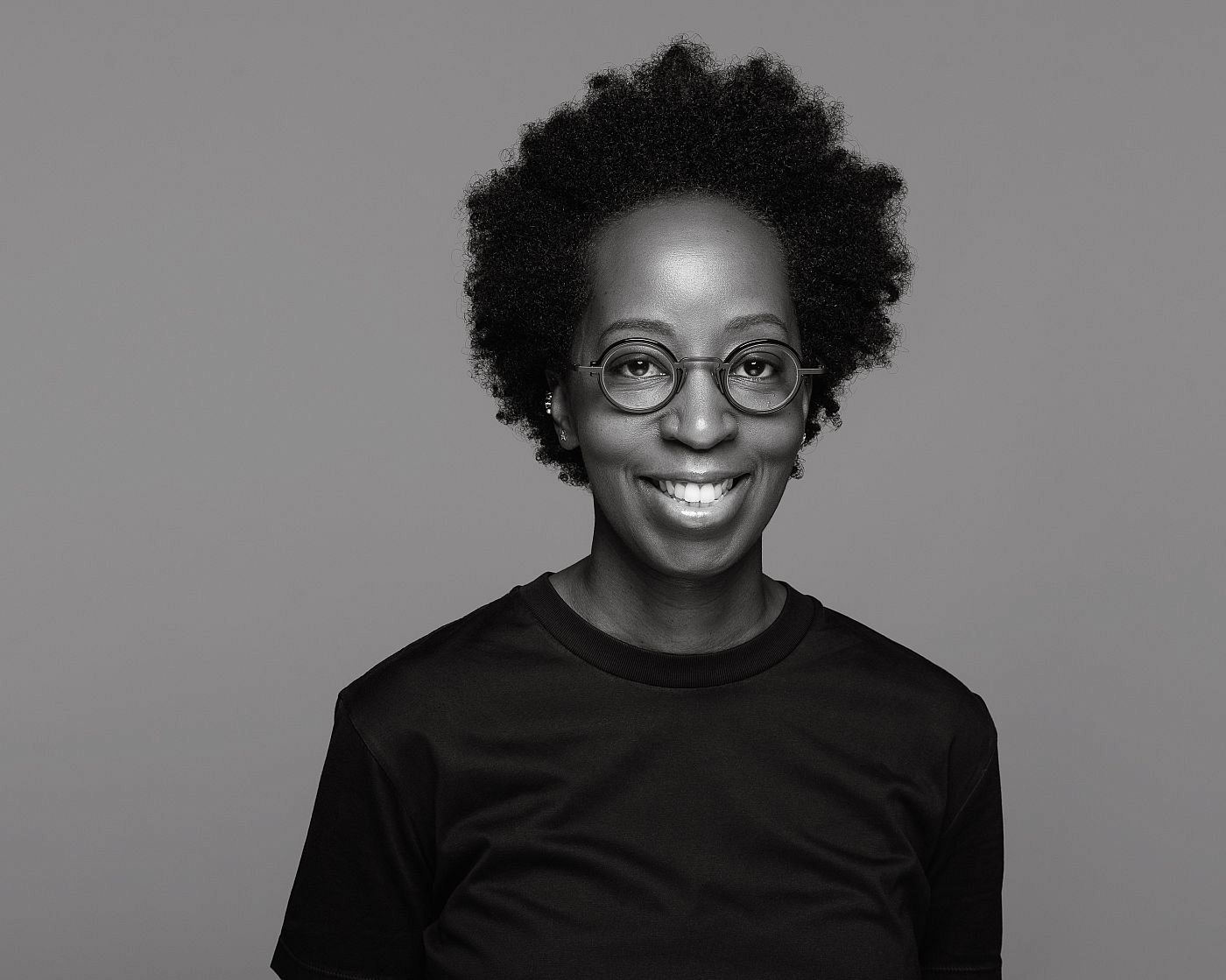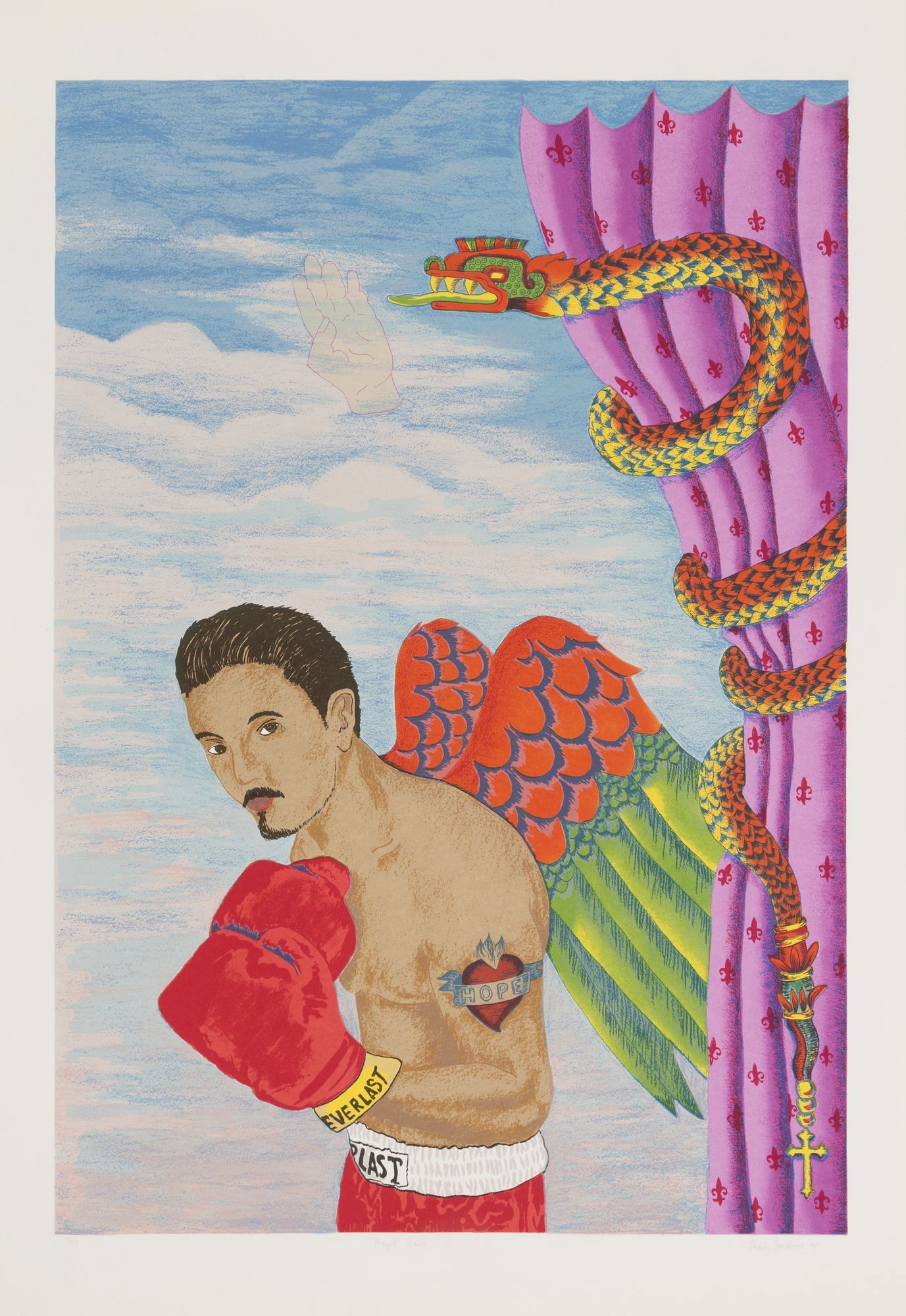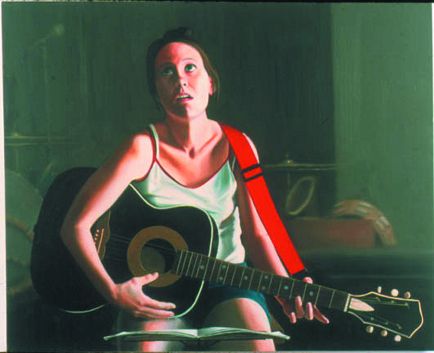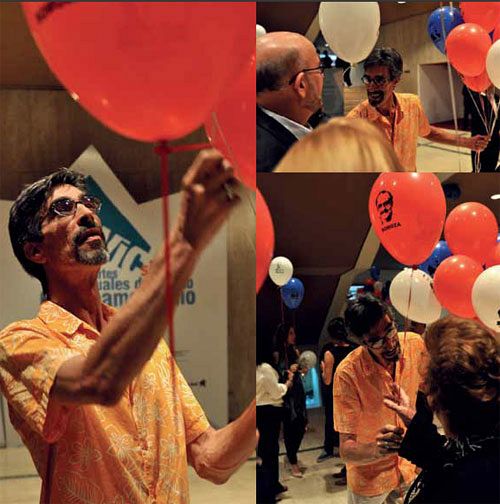Michelle Mlati: It was heartbreaking to learn that you had to abandon your studio in Sudan. I wanted to understand more about the Forest and Desert School, the literary school. But I also wanted to understand its connection to art. That’s the reason I wanted to come and learn from you and about how you have been working with it in your art. Was your connection to the school direct or indirect?
Kamala Ishag: It’s more indirect because when I worked in my practice, I wasn’t always in Sudan. The work got classified as if it were part of this group…It’s not that we would always gather and start working together even when I was there.
MM: I understand that, because this whole exhibition [The Forest and Desert School Revisited] was a way for me to revisit the school and understand its conceptual elements, but also to elaborate and add more to it through experimentation. So, you had your own ideas?
KI: Yes, everyone had their own ideas that he or she liked…but people classified them all into one group.
MM: But how come, then, that the group associated with the visual arts was called the Khartoum School and the group associated with literature the Forest and Desert School?
KI: This is different. Khartoum School was the name when I was a student, that was in the late 60s. We had a teacher for history, he was British or British American or something like that, he used to come to the school and he worked in Sudan for some time in the history department. When he was leaving, he called it the Khartoum School. This is how it got the name. And he said that this was for our teachers, the older generation, I mean older than me.
MM: This was Ahmed Shibrain, among others?
KI: Yes, Shibrain, El Salahi, Rabbah—this group—he said that this was the Khartoum School. Because I was almost the first. There were some teachers from the Ministry of Education who came to the college just for training. They did art for the secondary school and taught. But as a student, I was one of the first to go to the art school in Khartoum. He called me along with the group of El Salahi, Shibrain, and Rabbah, the old generation, he called us the Khartoum School. Not because they all worked the same, although most of them did, like the old Arabic calligraphy—have you seen some of the work? Except me.
MM: Yes, like the work of Mohamed Otaybi?
KI: Yes, but I was the first to just do relatively modernist painting, if you can call it that. I didn’t use the Arabic calligraphy in the way they used to, most of the older generation. But because I was one of the first painters in the school, they needed to find someone among them. That is how they just put me in the Khartoum School. I wasn’t in the Khartoum School because they have another stream of painting. I just didn’t use the Arabic calligraphy in my paintings, which they did. I just painted modernist-like paintings. Like when I came to England, I got so possessed by William Blake in the Tate gallery while studying at the Royal Academy of Art in the 60s. I used to go every weekend and spend the day there.
MM: And from that collection, was there something that inspired you in your work?
KI: Everything inspired me in England...I really loved England very much.
MM: Would you want to go back and live there?
KI: Live? No. I already live in Sudan. Now, I’m staying here in the United Arab Emirates, but I won’t live here forever. I hope not.
MM: Sudan is your home?
KI: Sudan is my country. It isn’t only my country, and my area, and my house, it is where I would like to be living when I go. Inshallah.
MM: I hope that you will go back.
KI: Sometimes I remember the house.
MM: Can you describe some of the works that you left behind?
KI: I left them in the studio, I think about them every minute of the day.
MM: And do you remember the last thing you painted before you left?
KI: I had like six or seven works, murals if I remember, different sizes. They start from 2.5 meters by 2 meters, as the canvas I cut is 2 meters wide, and then I painted on it and then stretched it. I had six or seven; I had to put them all around the studio. The largest painting was 4.5 meters by 2 meters. I vaguely remember it when I was there because I wanted to do some touches, every time I remember what I had to do.
MM: What was the subject matter of these works?
KI: It’s always abstract. Figurative abstraction, that’s what I do. It’s very sad. I can lose everything you know, but not my work.



